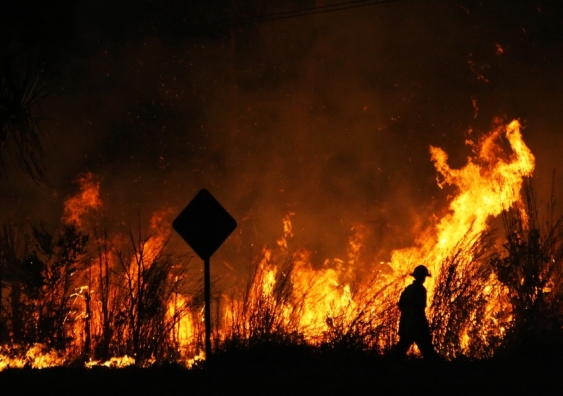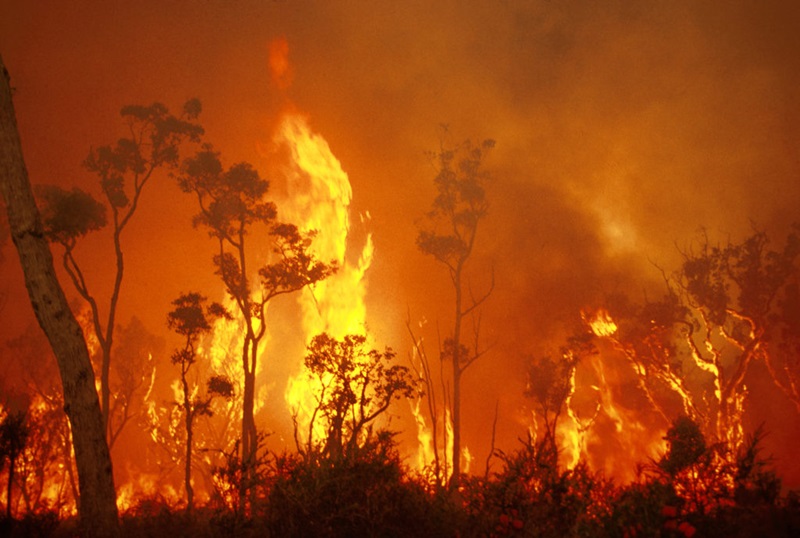Comprehending the Importance of a Detailed BAL Assessment Report
Wiki Article
Crucial Tips for Bushfire Monitoring to Ensure Fire Defense

Understanding Bushfire Danger Levels
Understanding the varying degrees of bushfire danger is important for effective planning and prep work in mitigating possible hazards to properties and lives. Bushfire risk levels are usually categorized based on aspects such as weather condition conditions, fuel availability, topography, and historical fire habits. By understanding these risk individuals, levels and neighborhoods can proactively implement techniques to decrease susceptability and enhance strength despite possible bushfire events.The first level of bushfire threat is reduced threat, where the chance of a bushfire taking place and triggering considerable injury is very little. This level typically takes place during periods of low temperatures, moderate moisture, and very little wind rates. Moderate risk degrees show an increased possibility for bushfires because of escalating weather or gas schedule. Risky levels indicate a substantial risk, with problems favorable to rapid fire spread and severe fire behavior. Severe threat degrees are one of the most essential, posing imminent risk to buildings and lives as a result of extreme climate condition and very flammable gas.
Comprehending these bushfire threat degrees makes it possible for stakeholders to tailor their preparedness and action actions appropriately, guaranteeing a proactive and reliable technique to bushfire monitoring.
Creating a Defensible Space
Reliable bushfire management begins with establishing a defensible room around residential properties to enhance security against possible fire hazards. A defensible area is a buffer zone that creates an obstacle between a framework and the surrounding combustible greenery. This area acts as a crucial line of defense, giving firemans a safe location to run and aiding to minimize the threat of a fire spreading out to the residential property.When creating a defensible area, it is vital to consider the format of the building and the bordering landscape. Clearing plants, specifically very combustible plants, within a certain distance of the building can aid avoid the quick spread of fires. In addition, keeping a well-irrigated area around the residential property can even more boost its defensibility.
Regular maintenance of the defensible area is crucial to ensure its performance. This consists of trimming overhanging branches, clearing dead vegetation, and keeping the area cost-free of particles. By spending effort and time into developing and preserving a defensible area, homeowner can considerably boost official site their opportunities of protecting their homes and assets throughout a bushfire.
Carrying Out Fire-Resistant Landscaping
When making landscapes to reduce the risk of bushfires, incorporating fire-resistant elements is vital for enhancing property security and decreasing fire hazards. Implementing fireproof landscape design includes strategic preparation to create a defensible room around structures. Begin by picking fire-resistant plant varieties that are less likely to stir up and create lower levels of combustible materials. Select plants with high moisture web content, low oil content, and very little dead plant life to minimize the risk of fire spread. Additionally, keep adequate spacing in between plants and maintain them appropriately pruned to stop fire from quickly jumping in between greenery.
Creating an Emergency Situation Evacuation Plan
Developing a detailed emergency situation evacuation plan is vital for making sure the safety and wellness of people during possible bushfire events (Bushfire Risk). An efficient discharge strategy must lay out clear treatments to adhere to in case of a bushfire hazard, including assigned discharge paths, setting up factors, and communication protocolsTo start creating an emergency situation discharge strategy, it is important to analyze the specific dangers and susceptabilities of your location. Recognize several emptying courses that bring about secure areas far from the fire, taking into consideration factors such as surface, road ease of access, and potential risks. Establish communication networks to sharp citizens of an approaching emptying, using methods such as sirens, message informs, or door-to-door notifications.
Consistently review and practice the discharge strategy with all residents or community participants to make certain everyone comprehends their roles and duties. Conduct drills to great post to read evaluate the effectiveness of the plan and make any kind of necessary adjustments. By having a well-prepared emptying strategy in position, you can improve the possibilities of a secure and orderly emptying during a bushfire emergency.
Maintaining Fire Safety And Security Equipment
After establishing a detailed emergency evacuation strategy for bushfire events, it is essential to prioritize the regular maintenance of fire safety and security equipment to make certain ideal functionality and readiness. Regular upkeep of fire security equipment such as fire extinguishers, smoke alarm, smoke alarm, and sprinkler systems is essential in securing lives and residential property throughout a bushfire. Performing routine evaluations, screening, and servicing of these gadgets by qualified experts is important to ensure they remain in functioning order when required.Fire extinguishers this page must be examined consistently for pressure levels, noticeable damage, and proper performance. By carefully preserving fire safety tools, individuals can boost their readiness and feedback capabilities in the occasion of a bushfire.
Verdict
To conclude, efficient bushfire monitoring entails comprehending risk degrees, producing defensible areas, applying fire-resistant landscaping, establishing emptying plans, and keeping fire security devices. By complying with these vital tips, individuals can make certain better fire protection and security for their communities and residential properties. It is essential to focus on aggressive actions to alleviate the threats connected with bushfires and to be prepared for emergencies.By comprehending the nuances of bushfire threat degrees, creating defensible rooms, carrying out fire-resistant landscape design, producing comprehensive discharge plans, and ensuring the maintenance of fire security devices, areas and individuals can significantly reinforce their durability versus the ravages of wildfires - Bushfire Management Plan. These pointers are not just essential for guarding versus prompt fire hazards but also for fostering long-term fire protection strategies that can make a substantial distinction in the face of rising bushfire dangers
High-risk degrees indicate a considerable danger, with problems conducive to fast fire spread and extreme fire actions. Regular upkeep of fire safety and security equipment such as fire extinguishers, smoke detectors, fire alarm systems, and lawn sprinkler systems is critical in guarding lives and residential or commercial property throughout a bushfire.In verdict, effective bushfire management involves comprehending risk levels, creating defensible rooms, executing fire-resistant landscaping, establishing discharge strategies, and maintaining fire safety tools.
Report this wiki page